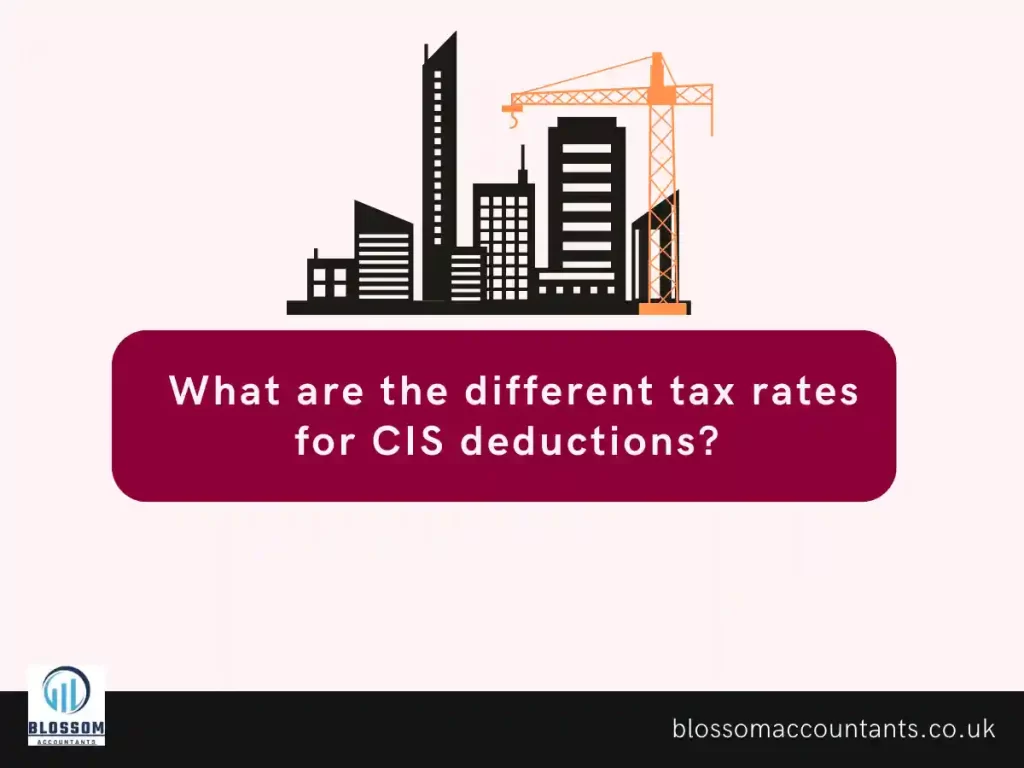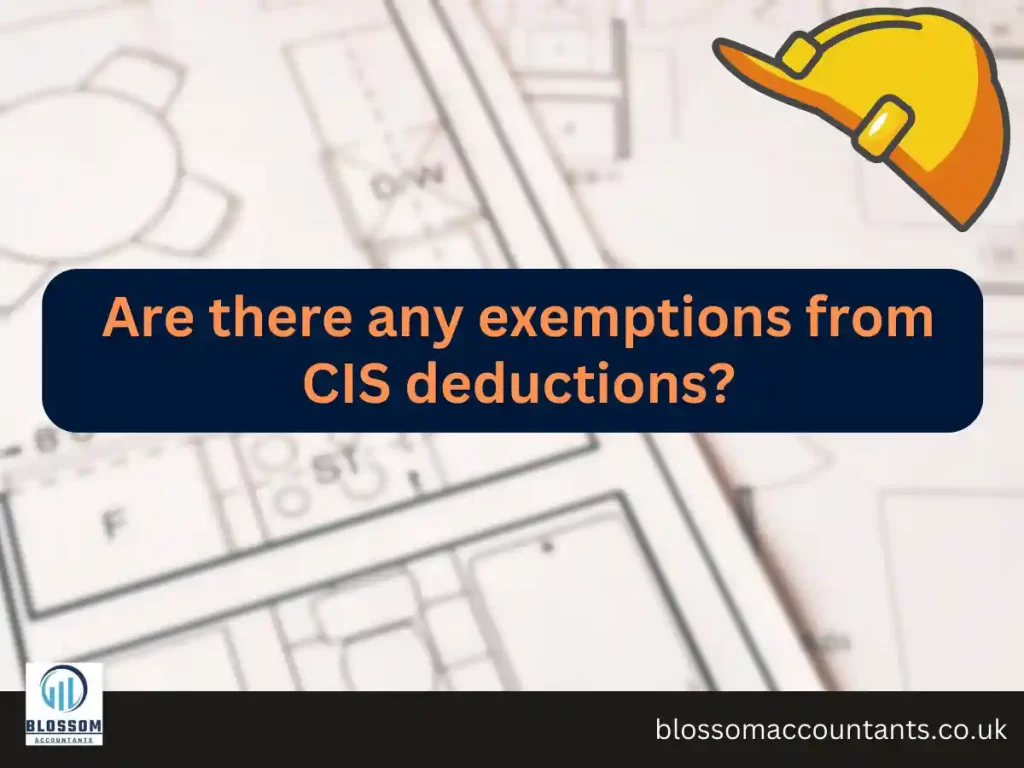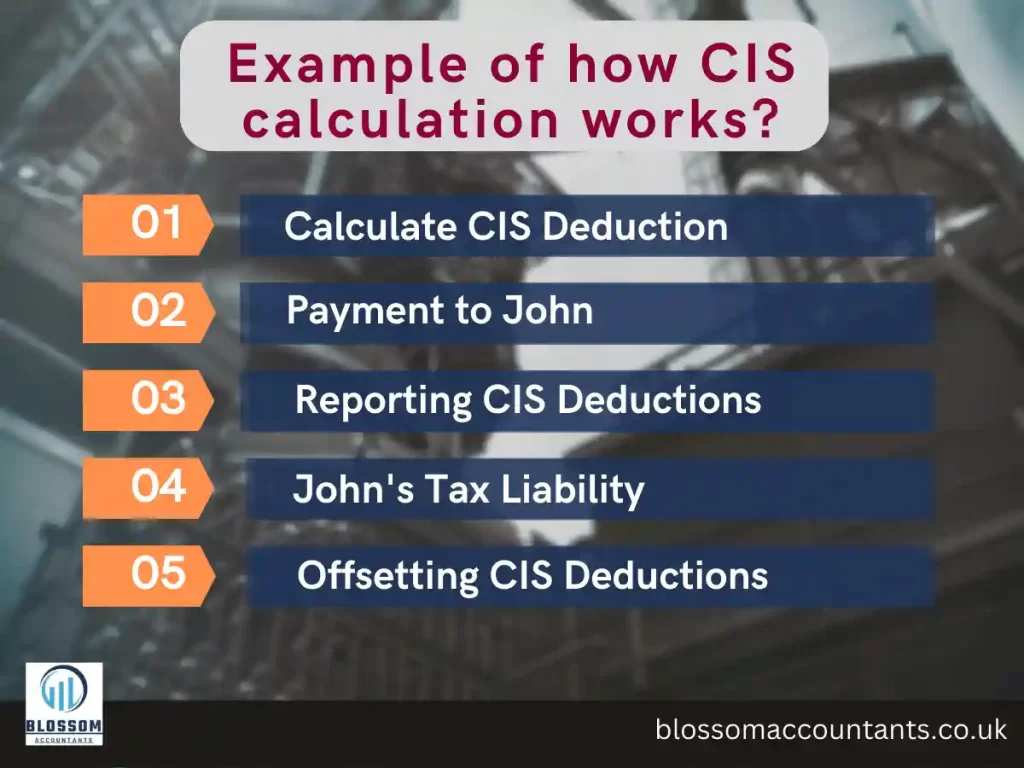About CIS Tax in the UK:
The Construction Industry Scheme (CIS) tax is a specific tax scheme in the United Kingdom that applies to contractors and subcontractors operating within the construction industry. CIS aims to regulate tax deductions at source for individuals or businesses working in construction. In this article, we’ll provide answers to common questions about CIS tax calculation in the UK.
Table of Contents
Who is required to register under the CIS scheme?
Contractors and subcontractors involved in construction-related work in the UK need to register under the CIS scheme. Contractors are individuals or businesses that pay subcontractors for construction work, while subcontractors are self-employed individuals or businesses providing construction services to contractors.
How is CIS tax deducted?
CIS tax is deducted at source, meaning the contractor deducts a specified percentage from the subcontractor’s payment and submits it directly to HM Revenue and Customs (HMRC) as an advanced tax on behalf of the subcontractor. The deducted amount contributes towards the subcontractor’s final tax liability at the end of the tax year. The subcontractor can reclaim at the end if paid extra to HMRC.
What are the different tax rates for CIS deductions?
The rate of CIS tax deductions depends on the subcontractor’s registration status with HMRC. There are two rates:
a) Registered subcontractors: Contractors deduct 20% of the payment for registered subcontractors who have provided a valid Unique Taxpayer Reference (UTR) number.
b) Unregistered subcontractors: Contractors deduct 30% of the payment for unregistered subcontractors or those who haven’t provided a valid UTR number.
If you have UTR number then 20% tax deduction else 30% tax deduction if you don’t have UTR number.

How are CIS deductions reported?
Contractors must report the deductions they make from subcontractors‘ payments on a monthly basis using the CIS monthly return. This return includes details of payments made and the total deductions withheld. The information is submitted to HMRC online.
Can subcontractors reclaim CIS deductions?
Yes, subcontractors can reclaim CIS deductions if their total tax liability is less than the amount deducted throughout the year. They can claim a refund by offsetting the deductions against their tax liability, typically done through their Self Assessment tax return every year.
Are there any exemptions from CIS deductions?
Certain subcontractors may qualify for gross payment status, which exempts them from CIS deductions. To qualify, subcontractors must meet specific criteria, including a track record of paying tax and National Insurance contributions on time. Contractors should verify a subcontractor’s gross payment status with HMRC before making payments without deductions.
Also read: CIS Tax Refund

What are the penalties for non-compliance with CIS tax obligations?
Non-compliance with CIS tax obligations can lead to penalties imposed by HMRC. Penalties vary depending on the severity of the non-compliance, such as late filing of CIS returns or failure to register under the scheme. It is essential to fulfill all CIS tax obligations to avoid penalties.
Example of how CIS calculation works?
Example:
John is a registered subcontractor working in the construction industry. He has provided his UTR number to his contractor, ABC Construction Ltd., who will be deducting CIS tax from his payments.
John completes a construction project for ABC Construction Ltd., and the total payment for his services is £1,000.
Step 1: Calculate CIS Deduction
Since John is a registered subcontractor, the contractor will deduct CIS tax at a rate of 20%.
CIS Deduction = £1,000 x 20% = £200
Step 2: Payment to John
After deducting the CIS tax, the contractor will pay John the remaining amount.
Payment to John = £1,000 – £200 = £800
Step 3: Reporting CIS Deductions
The contractor, ABC Construction Ltd., must report the CIS deductions made from John’s payment to HMRC. This information is included in the monthly CIS return.
Step 4: John’s Tax Liability
At the end of the tax year, John will need to assess his overall tax liability, taking into account the CIS deductions made by ABC Construction Ltd. Let’s assume John’s total tax liability for the year is £2,500.
John’s Final Tax Liability = £2,500
Step 5: Offsetting CIS Deductions
John can offset the CIS deductions made by ABC Construction Ltd. against his final tax liability when filing his Self Assessment tax return.
Adjusted Tax Liability = £2,500 – £200 = £2,300
In this example, John’s CIS tax deduction of £200 is offset against his final tax liability, reducing it from £2,500 to £2,300. John will then pay the remaining tax amount based on this adjusted liability.
Also read: CA3916 Statement

It’s important to note that this example assumes a simplified scenario, and individual circumstances may vary. The specific tax rates and deductions will depend on the contractor’s and subcontractor’s status and the prevailing tax regulations at the time. It is always recommended to consult with a qualified accountant or HMRC for accurate and up-to-date information regarding CIS tax calculation.
Conclusion of CIS tax deduction :
Understanding CIS tax calculation is crucial for contractors and subcontractors working in the UK’s construction industry. By following the rules and regulations set by HMRC, individuals and businesses can ensure compliance, minimize tax liabilities, and avoid potential penalties. For detailed guidance on CIS tax, it is recommended to consult with a qualified accountant or contact HMRC directly.
DISCLAIMER: We have written the UK accounting and tax related details for your information only. For professional advice or for any accounting task you require, you may need to speak to a professional accountant near you who can assist you. Please read our disclaimer for more details.

